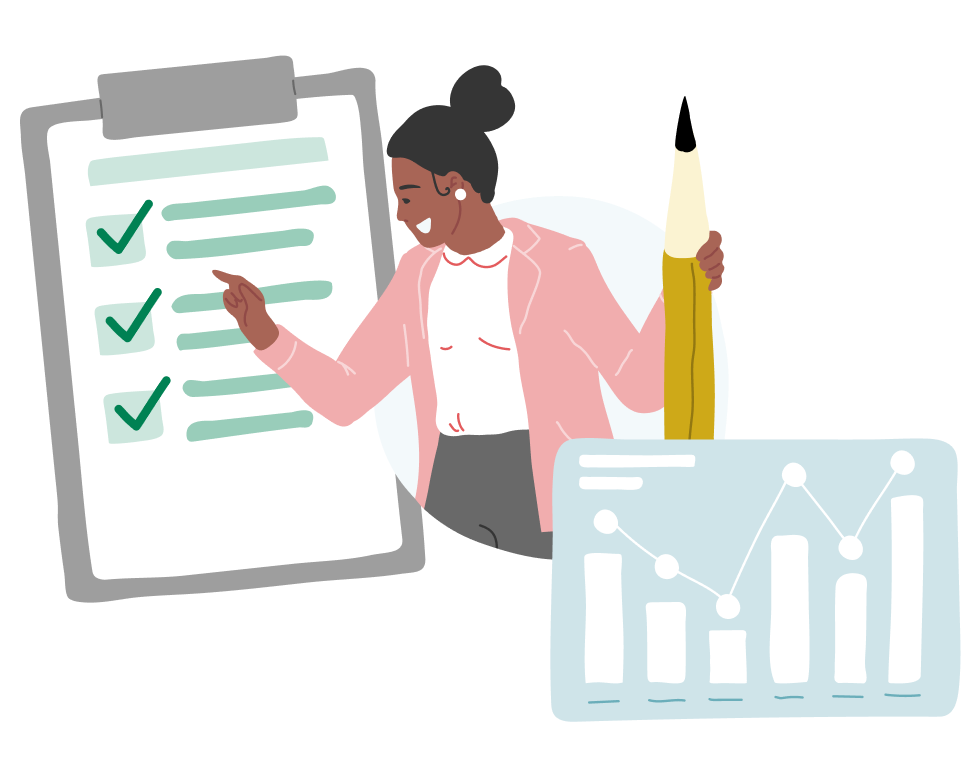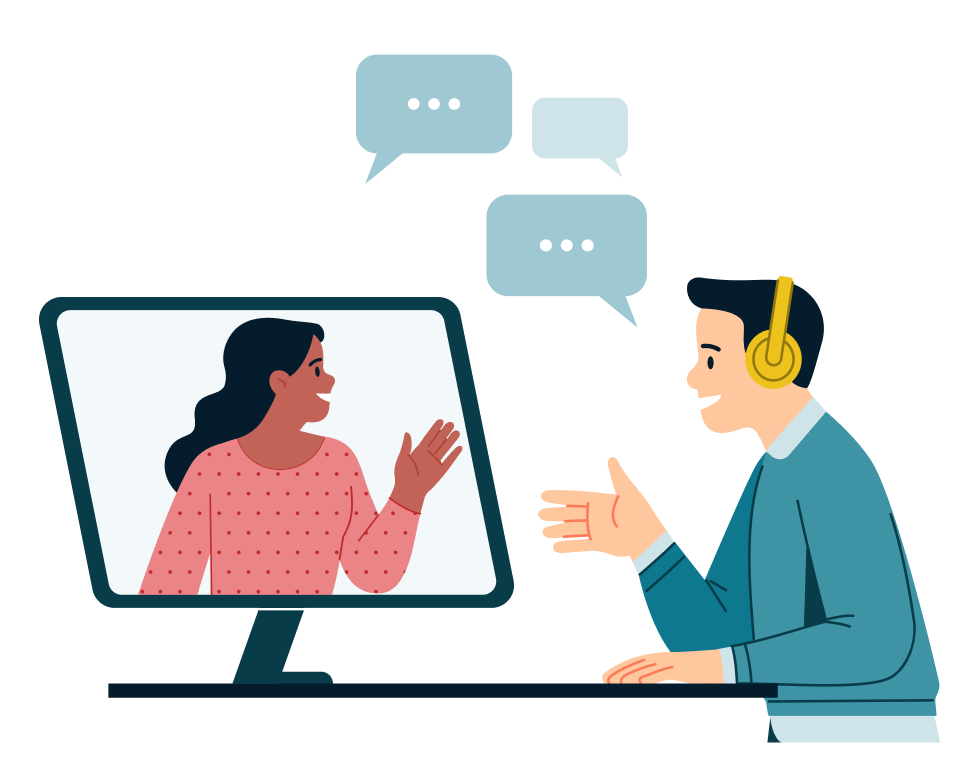
Your organization is doing great. Your learning programs are rich with valuable content. Your learners are eager and engaged.
But there’s one piece that doesn’t quite fit in this otherwise picture-perfect puzzle: Your learning management system (LMS) isn’t everything it should be. Whether due to the limitations of old technology or an off-putting user experience borne of a clunky interface, your LMS has over time become the one area of your organization that learners seem less than impressed with.
In this case, however, that one area is a big deal. Your LMS, after all, can significantly impact all of the other great things that are happening across your organization, both positively and negatively. For example, an effective LMS can help your learners:

Association and credentialing bodies that view their LMS as a strategic asset face a big decision when it’s time to upgrade: Should we build or should we buy?
It’s a familiar dilemma, but when it comes to lifelong learning, the stakes are especially high. The choice you make now will directly impact your ability to scale, adapt, and deliver value to your learners long term.
Your organization may be thriving today. But what comes next? How you answer the build-or-buy question could determine whether your LMS propels your momentum forward or derails it.
Making the Move: When Is it Time to Upgrade Your LMS?
The precursor to any build-or-buy discussion is an assessment of your organization’s current LMS.
Is it still meeting the needs of both your learners and the organization? Or is it time for a change? If you bought your current LMS from a third-party vendor, is that vendor still delivering the value it promised? And if the organization’s needs or goals have changed since finding that vendor, are they capable of handling those new needs?
A clear look at your LMS may reveal limitations. Here are some common challenges:
At minimum, your LMS should allow you to tailor experiences with:

If your LMS is clunky, limited, or outdated, your admins will spend more time fighting the system than improving it. Look for an LMS that empowers administrators with:
When learning is mission-critical, you need more than just an LMS vendor, you need a strategic partner. Your LMS provider should offer guidance, expertise, and responsiveness that matches the stakes of your programs. Look for a partner that offers:
The decision to invest in a new LMS is a significant one for any learning organization. It’s a good idea to start with a big-picture understanding of what’s involved and what you’re trying to accomplish before drilling into the details of features or configurations. Here are three questions to consider up front.
1. Where do you want your learning program to be in 5 years?
Is your organization planning to expand its educational offerings, shift delivery formats, or reach new types of learners in the next 3–5 years? If so, your LMS needs to be ready for that evolution.
Even if your current system meets your basic needs now, ask yourself:
This is also the right time to consider learner behavior. If you expect more users to choose online formats (and many will), your LMS should offer the kind of digital experience today’s professionals expect.


Building an LMS may seem like the less expensive option initially. But costs for IT builds are notoriously difficult to pin down, and often exceed expectations.
If you’re considering building an LMS, does your budget take into account the very real possibility of rising costs? And beyond the hard dollars and cents, what’s the opportunity cost of dedicating your IT team to an LMS build? What other projects might need to be paused or scrapped?
Buying an LMS from a third party provides more price certainty. The upfront cost tends to be higher, but the risk of unexpected overruns is much lower. Plus, expertise and support are typically built into that upfront price.
3. Can your LMS keep up with evolving learner needs?
The educational landscape is always changing, as are the needs of your learners. An LMS is not a set-it-and-forget-it type of project. If your LMS isn’t adapting to the different things learners are looking for along their career journeys, there are plenty of third-party options for them to consider instead.
While some organizations may be able to keep up with that type of evolution in their built LMS, others will struggle to meet the demand for such rigorous upkeep. And rightfully so: today’s learners expect personalized study materials, multi-format learning materials, interactive digital learning opportunities, data-powered reports on their progress, and so much more.
A company that specializes in LMS projects, on the other hand, will be dedicated to monitoring the changing landscape and helping your organization make innovations based on things like changing learner needs, newly available technology, and user feedback.

What an Effective LMS Looks Like: The Basics and Beyond
Whether built or bought, there are certain bedrock features that any LMS should have, including:
Most organizations can probably build an LMS with these types of essential features for less than a third-party solution. But is the bare minimum really enough? Today’s learners want software that is personalized, mobile, and on-demand. It’s what they’ve come to expect in every other aspect of their lives—from shopping to travel to entertainment—and your LMS is no exception.
To meet the expectations of modern learners, an LMS needs features that go beyond the basics. Organizations that offer these types of features will not only be further engaging and delighting their learners, they’ll be helping to boost
their own revenue as those satisfied learners come back for more. Some ideas to consider:
Building these types of features into an LMS requires a level of knowledge and specialization that many in-house IT teams may not have. An outsourced provider, on the other hand, will have experience incorporating cutting-edge features into systems across a wide array of industries and fields.
All of these elements and features help an LMS connect with learners. But what happens next? Can you hold their attention and keep them coming back for more? You can if your LMS remains relevant, which involves several other considerations that should factor into the build-or-buy decision:

How Outsourcing Your LMS Lets You Focus More on What Really Matters
Learning organizations that opt to buy rather than build their LMS often focus almost exclusively on the ongoing—and escalating—costs of maintaining an in-house system. That’s a worthwhile, pragmatic consideration.
But the greater advantage of making the decision to outsource is the ability to redirect your organizational focus to where it belongs—serving your learners. A dedicated LMS provider can relieve your organization of many of the ongoing responsibilities and commitments that an in-house system demands by providing:
Outsourcing your LMS may be simpler than building one from scratch, but it’s still a big investment that requires planning and preparation. Here are some important steps to take on the road to your purchase:
Ready to buy?
What to Look For in an LMS Vendor
Take the eBook With You!
Download PDF